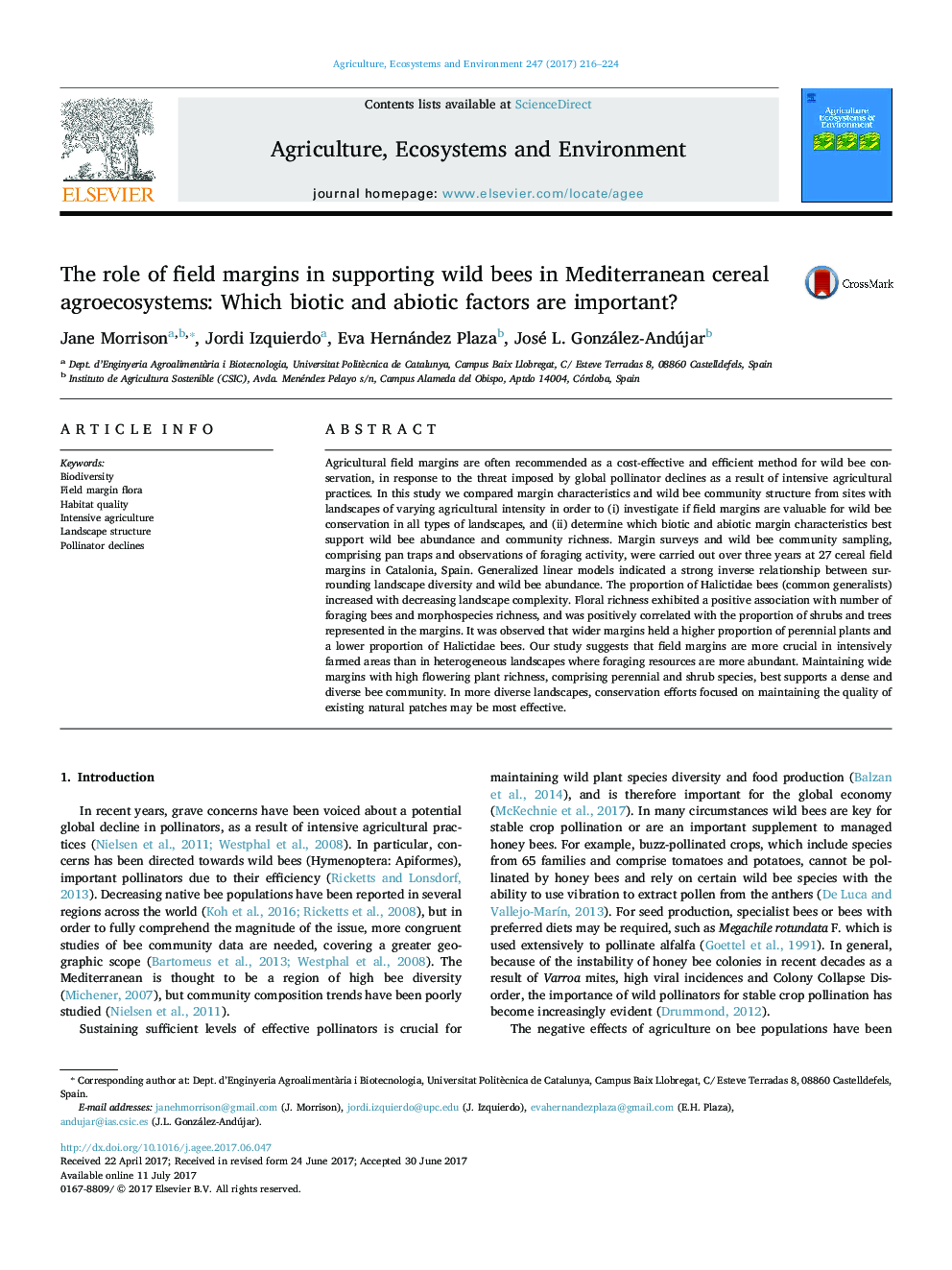| کد مقاله | کد نشریه | سال انتشار | مقاله انگلیسی | نسخه تمام متن |
|---|---|---|---|---|
| 5537995 | 1552005 | 2017 | 9 صفحه PDF | دانلود رایگان |

- High floral richness supported a more dense and diverse wild bee community.
- Floral richness associated with higher proportion of shrubs and trees in margins.
- Wider margins showed less of a tendency for bee community homogenization.
- Wider margins associated with higher proportion of perennial plant species.
- Field margins less crucial for wild bee conservation in heterogeneous landscapes.
Agricultural field margins are often recommended as a cost-effective and efficient method for wild bee conservation, in response to the threat imposed by global pollinator declines as a result of intensive agricultural practices. In this study we compared margin characteristics and wild bee community structure from sites with landscapes of varying agricultural intensity in order to (i) investigate if field margins are valuable for wild bee conservation in all types of landscapes, and (ii) determine which biotic and abiotic margin characteristics best support wild bee abundance and community richness. Margin surveys and wild bee community sampling, comprising pan traps and observations of foraging activity, were carried out over three years at 27 cereal field margins in Catalonia, Spain. Generalized linear models indicated a strong inverse relationship between surrounding landscape diversity and wild bee abundance. The proportion of Halictidae bees (common generalists) increased with decreasing landscape complexity. Floral richness exhibited a positive association with number of foraging bees and morphospecies richness, and was positively correlated with the proportion of shrubs and trees represented in the margins. It was observed that wider margins held a higher proportion of perennial plants and a lower proportion of Halictidae bees. Our study suggests that field margins are more crucial in intensively farmed areas than in heterogeneous landscapes where foraging resources are more abundant. Maintaining wide margins with high flowering plant richness, comprising perennial and shrub species, best supports a dense and diverse bee community. In more diverse landscapes, conservation efforts focused on maintaining the quality of existing natural patches may be most effective.
Journal: Agriculture, Ecosystems & Environment - Volume 247, 1 September 2017, Pages 216-224